Immerse yourself in the rich tapestry of active volcanoes of the Philippines with a journey to the majestic Mayon Volcano, a natural wonder that rivets visitors with its perfect cone shape and vibrant history. This active volcano, residing in the heart of the Bicol Region, is more than just a geological marvel; it’s a symbol of the cultural heritage and resilient spirit of the Filipino people. Let’s embark on a fascinating exploration of this iconic landmark volcanoes.
Key Takeaways
- Mayon Volcano, an active stratovolcano in the Philippines, is known for its near-perfect conical shape and rich cultural and geological history, contributing significantly to the local communities and the fertile soils of the Bicol Region.
- The ideal time to visit Mayon Volcano is during the dry months from March to May, with essential preparations including appropriate clothing, hiking gear, and safety precautions due to the unpredictable nature of volcanic eruptions.
- Comprehensive travel to Mayon Volcano includes transportation options like flights and buses, and exploration activities range from guided tours to adventurous 4×4 ATV rides, while accommodation options vary from budget-friendly lodgings to eco-friendly resorts.
Book your Adventure Now
Exploring Mayon Volcano: History and Significance
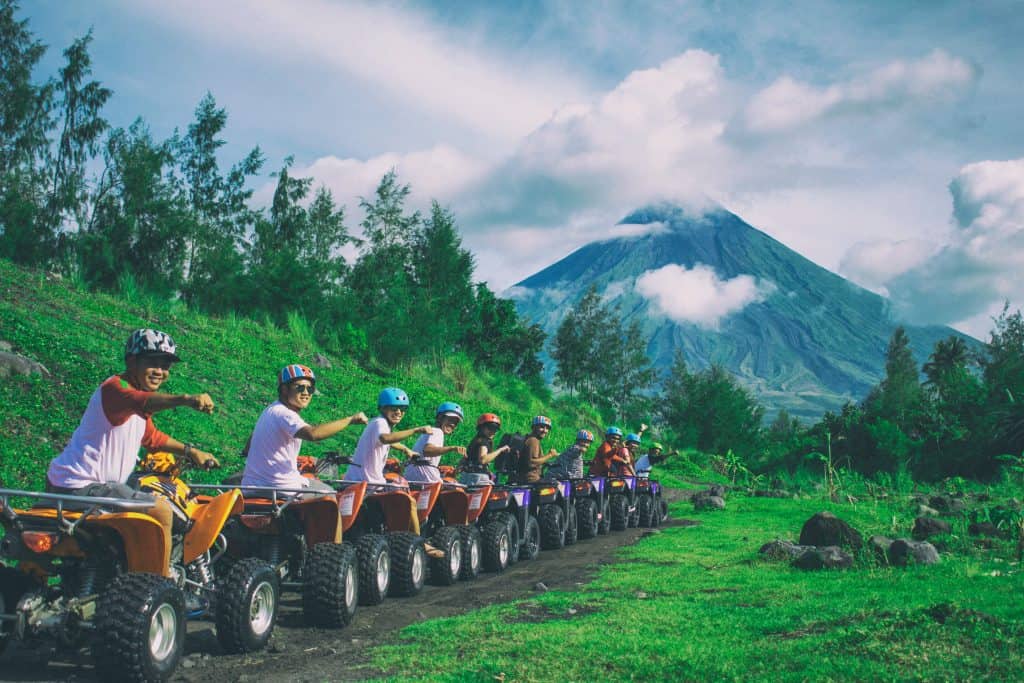
Known as the Philippines’ most active volcano, Mayon Volcano, or Mount Mayon, has erupted over 52 times in the past 500 years. This active stratovolcano, located in southern part of the province of Albay in the southern part of the Bicol Region, is widely regarded as a symbol of perfection due to its almost perfect conical shape. Numerous eruptions over centuries have sculpted this magnificent structure, making it a captivating spectacle for locals and tourists alike.
The communities and towns located around Mayon Volcano bear testimony to the eruption and its rich history. Eight cities, and towns including:
- Legazpi
- Daraga
- Camalig
- Guinobatan
- Ligao
- Tabaco
- Malilipot
- Santo Domingo
Thrive in the shadow of active volcanoes, including this province’ most active volcano yet. Each eruption, while a display of nature’s raw power, also contributes to the fertile soils, making the province and surrounding lands a bountiful source of crops and aiding in the prosperity of the Bicol Region.
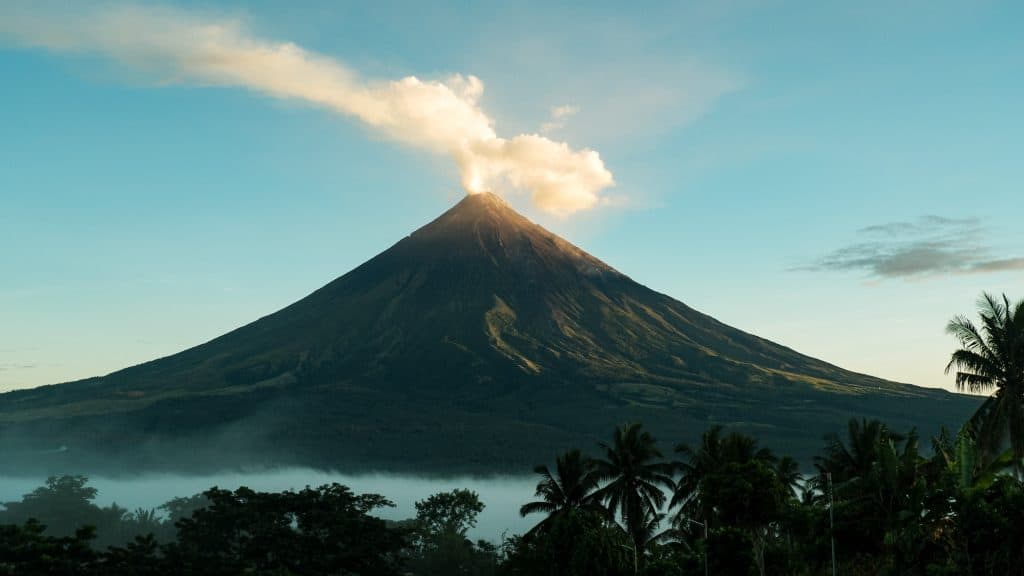
Geological Features
Mayon Volcano, classified as a classic stratovolcano, is world renowned for its symmetrical conical shape with a small central summit crater. Its unique structure is not just a product of its numerous eruptions but also a testament to the delicate balance between erosion and eruption. Some key features of Mayon Volcano include:
- Symmetrical conical shape
- Small central summit crater
- Steep upper slopes with an average gradient of 75%
- One of the most symmetrical volcanic cones in the world
This symmetrical structure is a result of the volcano’s destructive eruption and the erosion that has occurred beneath it over time, influenced by lava flows from the crater during past eruptions.
The volcano’s major eruption has resulted in:
- A minimum of 85 distinguishable lava flows, primarily composed of augite-hypersthene-andesite, as the lava flowed down the slopes
- Pyroclastic flows that result in deposits such as block and ash, alongside breadcrust bombs within an ash and lapilli matrix
- The interplay between erosion and the repetitive eruptions, determined by the angle of repose of ash, which has contributed to the formation of Mayon’s unique and captivating shape.
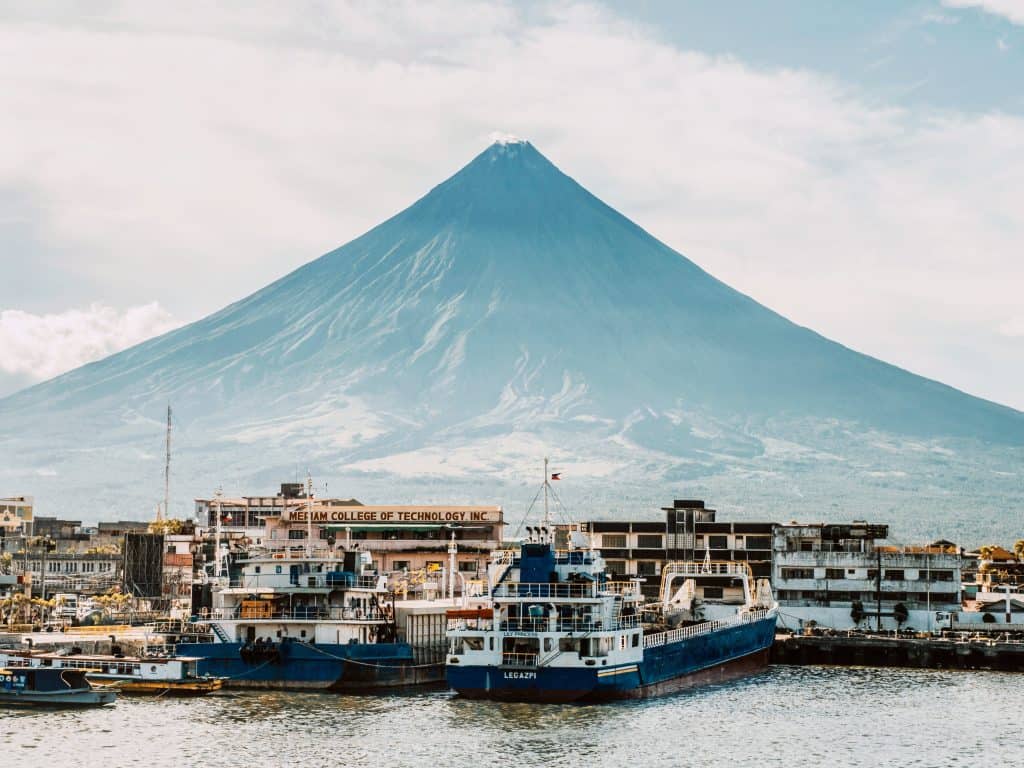
Cultural Importance
Mayon Volcano’s significance extends beyond its geological features. It holds a special place in the heart of the Bicolano people, being deeply embedded in their culture and folklore. The volcano is named after the legendary princess-heroine Daragang Magayon, which means “Beautiful Lady” in the Bicolano language. Mayon Volcano also shapes the themes of local festivals, reflecting its mythical origins and impressive presence.
As such, a visit to Mt Mayon is not just an exploration of the mountains and its physical beauty but also a journey into the vibrant culture and traditions of the Bicolano people, as showcased by the Philippine Institute.
Best Time and Preparations for Visiting Mayon Volcano
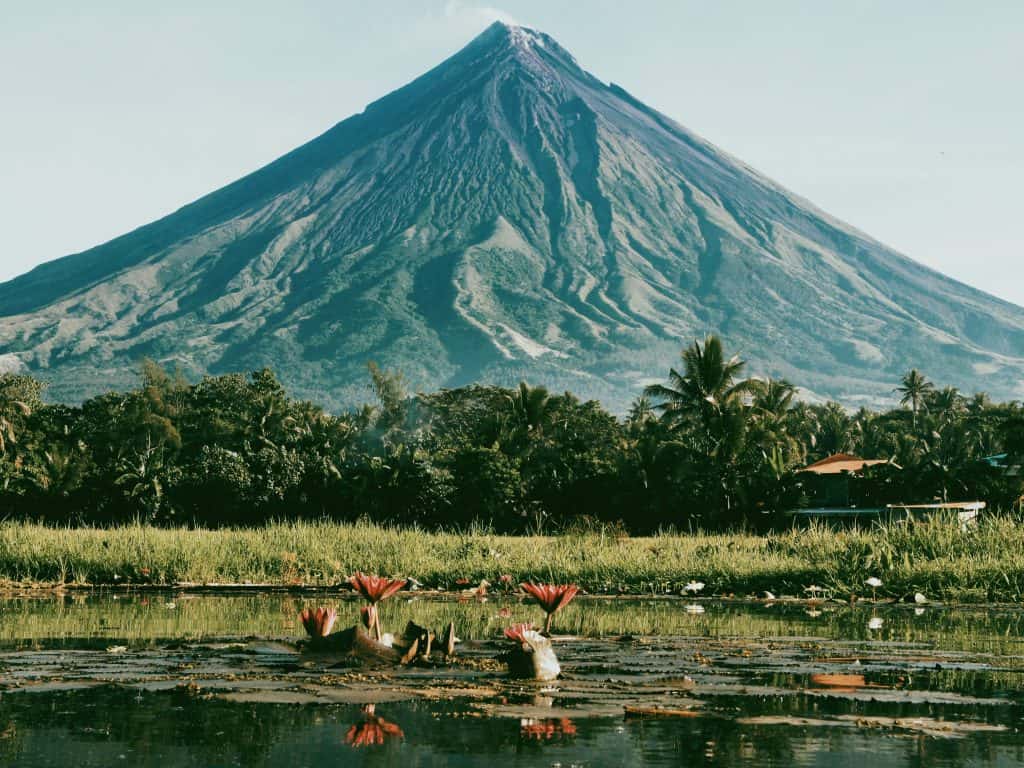
A comfortable and safe journey to Mayon Volcano requires careful consideration of the best time to visit and necessary preparations. The best time to visit Mayon Volcano is during the dry months from March to May, when the weather is most favorable for outdoor activities. Temperatures during this time hover around 89°F (32°C) during the day and drop to around 79°F (26°C) at night, creating ideal conditions for hiking and sightseeing.
As for preparations, here are some essential items to bring:
- Light, breathable, and comfortable clothing suitable for the hot, humid weather
- High-quality hiking boots
- Long sleeves
- A cap
- Sunscreen
These items will help protect you against the sun and ensure your comfort during the hike. Remember, Mayon is an active volcano, and its eruptions can be unpredictable. Safety should always be your foremost concern.
Ideal Season and Weather Conditions
While Mayon Volcano can be visited at any time of the year, the dry season from November to April is particularly favorable for tourists. The peak tourist season occurs from March to May, as the weather conditions during the southern part of this period are ideal for exploring the volcano and its surroundings. However, if you prefer to avoid the crowds and savor the tranquillity of the region, the off-peak season from November to early morning of December is worth considering.
Bear in mind that a visit during the rainy season could lead to explosive eruptions, landslides, and lahars due to weather conditions, potentially resulting in the most lethal eruption.
Necessary Gear and Safety Precautions
Packing the right gear is a crucial part of planning your visit to Mayon Volcano. Here are some recommended items to bring:
- Good quality hiking boots
- Waterproof clothing
- Long sleeves
- A cap
- Sunscreen
- An emergency kit containing water, food, and other necessary hiking items
These items will help protect you against the elements and ensure a safe and enjoyable hike or ATV ride on Mayon Volcano.
Remember to pack sufficient water and food to ensure proper hydration and nutrition during your trek. After all, a well-prepared traveler is a happy and safe traveler.
Getting to Mayon Volcano and Nearby Attractions
After determining the ideal time to visit and preparing your gear, you can start planning your journey to Mayon Volcano. Here are the steps to get there:
- Take a flight from Manila to Legazpi City, the nearest city to Mayon Volcano.
- From Legazpi City, you can take a bus or a taxi to reach the volcano.
- Various bus lines including Cagsawa, DLTB, and Penafrancia provide services from Manila to Legazpi.
- If you prefer a more scenic route, you can also take a ferry from Masbate Port to Legazpi.
Don’t miss out on the opportunity to explore the attractions around Mayon Volcano while you’re in the area. Here are some nearby attractions to check out:
- Cagsawa Ruins Park: offers an intriguing glimpse into the area’s history
- Sumlang Lake: provides stunning views of the volcano and the surrounding landscapes
- Ligñon Hill: offers panoramic views of the volcano and the surrounding area
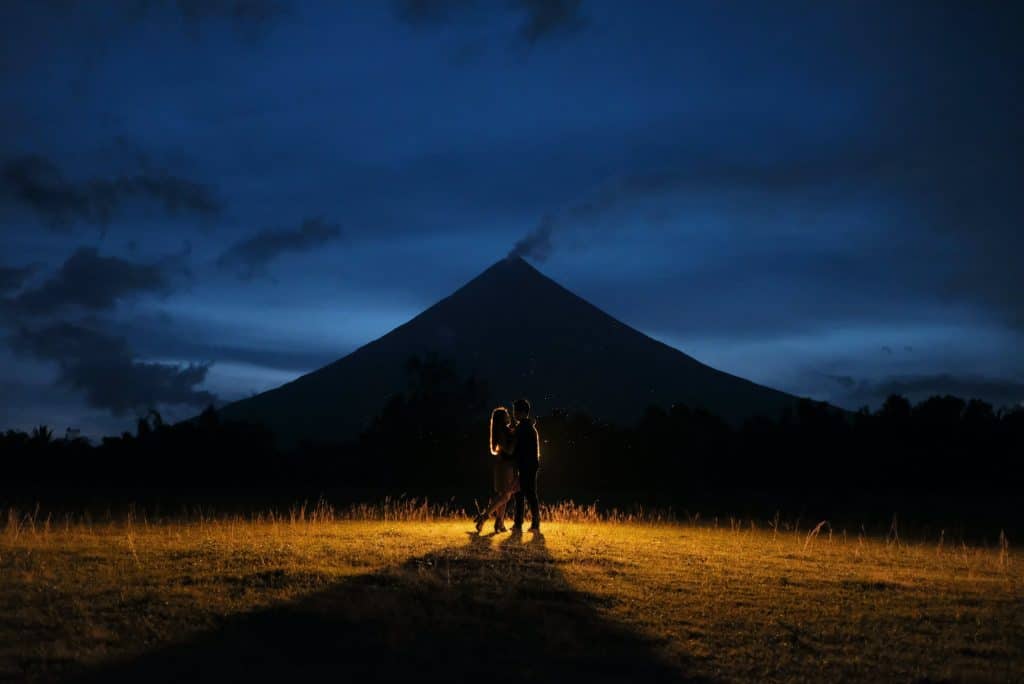
Transportation Options
Considering the various transportation options is an important part of planning your trip to Mayon Volcano. Direct flights from Manila to Legazpi City are operated by airlines such as AirAsia and Philippine Airlines, offering a quick and convenient way to reach the volcano. For a more economical option, you can also take a bus from Manila to Legazpi City. Several companies provide bus services, making it easy to plan your journey.
The road trip from Manila to Mayon Volcano takes approximately 3½ hours, offering a swift journey to the destination. The typical expense for a flight ticket to Mayon Volcano is approximately $52, while the lowest expense for traveling by road from Makati City to Mayon Volcano is around ₱1251.
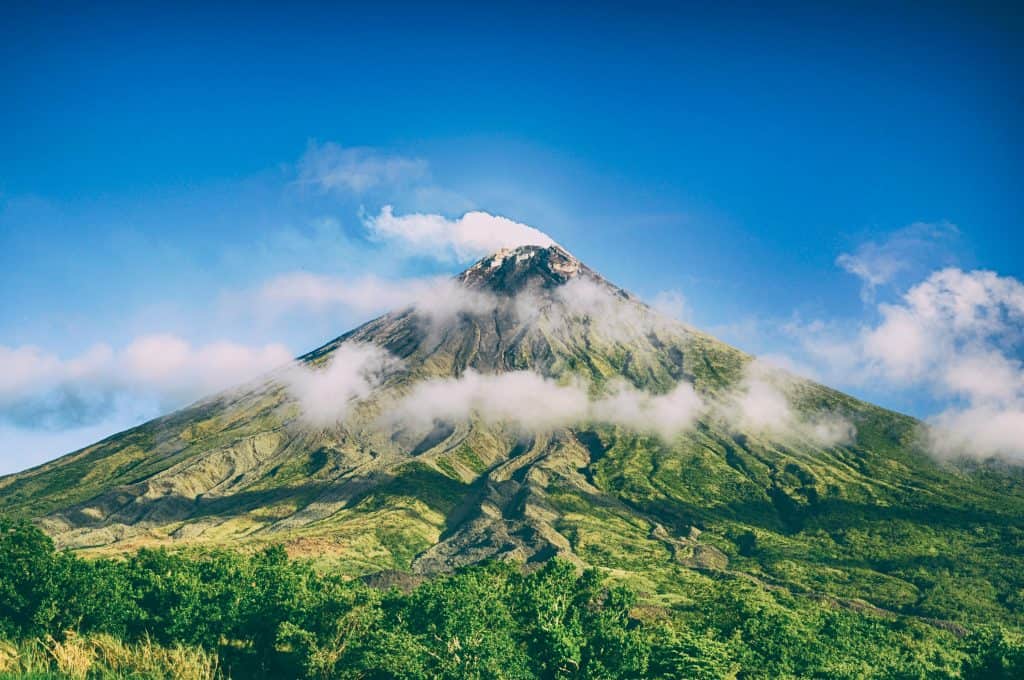
Nearby Attractions
Exploring the nearby attractions is essential to complete your visit to Mayon Volcano. The Cagsawa Ruins Park and Cagsawa National Museum are prominent attractions that provide a glimpse into the area’s history and offer picturesque views of the volcano.
For those looking for an adventure on Luzon Island, activities like balsa rides, cultural demonstrations, kayaking, and aqua biking are available at Sumlang Lake. The Ligñon Hill offers a range of activities including hiking, climbing, zip line, and rappelling, as well as a panoramic 360-degree view of the Mayon Volcano during the day.
Experiencing Mayon Volcano: Tours and Activities
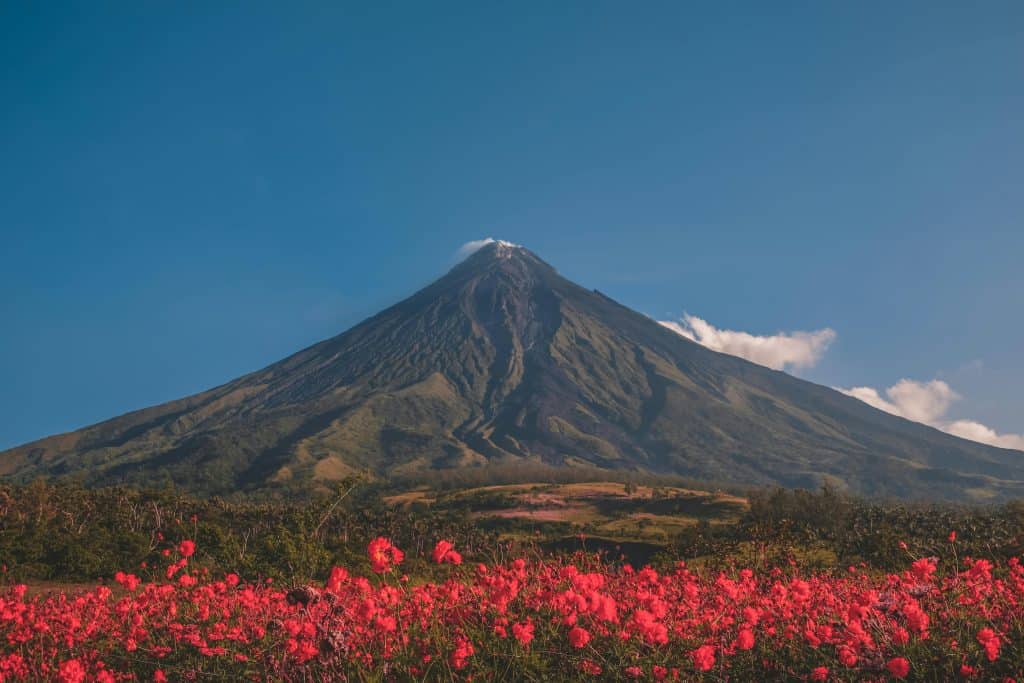
With knowledge on getting to Mayon Volcano and its nearby mountains and attractions, let’s explore the exciting tours and activities available at the highest point of this majestic peak. Whether you prefer a guided tour or an adventurous activity, climbing Mayon Volcano offers a wide range of options to suit your interests. For novice hikers, a trek up the mountains to the highest point, Camp 1, which typically takes 2-3 hours, is suggested. However, more experienced hikers can ascend the mountains as high as Camp 2 or beyond to a location referred to as ‘Rabbit’s Ear’.
One of the most popular activities on Mayon Volcano is the 4×4 ATV ride. This adventurous ride takes you through rice fields, forests, and volcanic rocks along a trail that leads to the mountain’s Lava Wall. The ATV ride not only provides an adrenaline rush but also offers a unique perspective of the volcano’s geological features. From the lush vegetation to the rocky terrain, each part of the trail offers a different experience, making it a must-do activity for any visitor. Just remember to wear comfortable clothes and shoes, and bring an emergency kit for safety.
Guided Tours
If you prefer a guided tour, there are several reputable tour companies offering guided tours of Mayon Volcano. These include:
These tours offer a comprehensive overview of the volcano and its surroundings, providing you with a wealth of information about its history, geology, and significance.
With a knowledgeable guide at your side, you can gain a deeper understanding of Mayon Volcano, volcanology and volcanoes and its impact on the local communities.
Adventurous Activities
For those with an adventurous spirit, Mayon Volcano offers a range of activities that will get your adrenaline pumping. One of the most popular activities is the Mayon 4×4 ATV ride, which takes you through rice fields, forests, lava and volcanic rocks along a designated trail leading to the Lava Wall. This adventurous ride offers a unique way to explore the volcano and its surroundings, giving you the opportunity to see parts of the volcano that are usually inaccessible.
Remember to wear comfortable clothes and shoes for the ride, and bring an emergency kit for safety.
Accommodation Options Near Mayon Volcano
A comfortable place to rest and recharge is necessary after a day of exploring Mayon Volcano and its surroundings. Fortunately, there are plenty of accommodation options near the volcano, catering to a variety of budgets and preferences. From high-end hotels to budget-friendly lodgings, there’s something to suit every traveler’s needs. You can even choose to stay at eco-friendly accommodations that prioritize sustainability.
The typical expense for accommodation near Mayon Volcano is approximately USD 31 per night, offering a variety of options to accommodate different budgets. Most accommodations are conveniently located within 1.9 to 3.1 miles from the volcano, making it easy to access the majestic peak for sunrise or sunset views.
Hotels and Resorts
There are several highly-rated hotels and accommodations located near Mayon Volcano, including:
- Hotel St. Ellis
- Balai Tinay Guesthouse
- Emerald Boutique Hotel
- ParmView Inn
- The Marison Hotel
- Your Brothers House Tribal Village
- Hotel Venezia
- Casablanca Suites
- Alicia Hotel
- The Oriental Legazpi
These establishments offer a range of amenities to ensure a comfortable stay, and many offer stunning views of the volcano.
Even budget-friendly options don’t skimp on comfort or convenience, making it easy to find an accommodation that fits your needs and budget.
Unique Stays
If you’re looking for a unique stay, there are several options near Mayon Volcano that offer a one-of-a-kind experience. You can consider staying at a private treehouse available on Airbnb, which offers direct views of the volcano. For eco-conscious travelers, there are eco-friendly lodgings such as Casa Basilisa Eco Boutique Resort by Cocotel, Lotus Blu Hotel, Misibis Bay Resort, and Go Hotels Plus Naga, all of which are recognized for their commitment to eco-friendly practices.
These unique stays offer a memorable experience, allowing you to enjoy the beauty of the Mayon Volcano natural park while minimizing your environmental impact.
Local Delicacies and Dining Options
Savoring the local delicacies is an integral part of your visit to Mayon Volcano. The region’s cuisine, known as Bicolano cuisine, is world renowned for its flavorful dishes such as:
- Bicol Express
- Kinalas
- Laing
- Pinangat
- Kinunot
- Pancit Bato
- Kandingga
These dishes, made with indigenous ingredients like Pili Nuts, Kusido, Boiled Pili Fruit, Nilubak or Nilupak, Rice Puto Bukayo, and Biniribid or Chakoy, offer a gastronomic adventure that’s as exciting as the volcano itself.
Whether you’re craving traditional Bicolano cuisine or looking for a fine dining experience, there are several dining options near Mayon Volcano that cater to every palate. Some of the top-rated restaurants in the area include:
- BARacuda
- Colonial Grill
- Small Talk Cafe
- Layag Restaurant and Grill
- Sibid-Sibid Food Park
- Four Seasons
- Balay Cena Una
- 1st Colonial Grill
- Balay Sa Bikol
These restaurants offer a range of dining options from casual bites to exquisite meals.
Bicolano Cuisine
Bicolano cuisine is known for its distinctive flavors, characterized by the use of coconut milk and chili. Renowned dishes include Bicol Express, a spicy pork dish cooked in coconut milk, and Laing, a spicy dish made with taro leaves and coconut milk.
Another unique delicacy is the Sili Ice Cream, a dessert made with red hot chili peppers or Thai Chili blended with coconut cream, offering a combination of spicy and sweet flavors. These dishes, with their unique combination of flavors, offer a culinary experience that’s as memorable as the majestic view of the volcano itself.
Recommended Restaurants
When it comes to dining, the area surrounding Mayon Volcano offers a plethora of options. For those seeking an authentic taste of Bicolano cuisine, Balay Cena Una, 1st Colonial Grill, Balay Sa Bikol, and Small Talk Cafe are highly recommended. If you’re looking for a fine dining experience, establishments like Balay Cena Una, 1st Colonial Grill, Layag Restaurant and Grill, and Four Seasons Restaurant Legazpi offer a sophisticated dining experience with stunning views of the volcano.
For a more relaxed dining experience, you can visit casual eateries such as 1st Colonial Grill, Sibid-Sibid Food Park, and Balay Cena Una.
Responsible Tourism and Environmental Conservation
Practicing responsible tourism is crucial for visitors to Mayon Volcano to ensure the preservation of its natural beauty and biodiversity for future generations. This includes:
- Adhering to the rules and regulations of Mayon Volcano Natural Park
- Choosing to stay at eco-friendly accommodations
- Supporting local markets and businesses
By doing so, you not only contribute to the local economy but also help in the conservation of the park’s diverse flora and fauna.
Tourists can support local communities by:
- Visiting ecotourism destinations
- Staying at eco-friendly hotels
- Experiencing the Bicolano hospitality that ensures guests’ stay is comfortable and worry-free
After all, responsible tourism is not just about enjoying the beauty and charm of a place but also about leaving a positive impact on the environment and the local community.
Protecting the Natural Park
Due to its diverse ecosystems and natural resources, the preservation of Mayon Volcano Natural Park, also known as Mayon Volcano National Park, is of utmost importance to government. The protected natural park is home to 156 floral species, 83 varieties of trees, and 104 species of land vertebrates, including several endemic species. The protection of the protected park is ensured by government, through the implementation of Presidential Proclamation No. 413, which mandates that all activities within the protected park align with conservation objectives.
As visitors, it’s our responsibility to respect these regulations and do our part in preserving the park’s natural beauty and biodiversity.
Supporting Local Communities
An integral part of responsible tourism is supporting local communities. By patronizing local markets and businesses, we contribute to the local economy, support farmers, and help create economic opportunities. Moreover, participating in community-based tourism initiatives provides an opportunity to:
- Learn about the local culture and traditions
- Engage with local communities
- Support local artisans and craftsmen
- Experience authentic local cuisine
- Contribute to sustainable development
This enriches our travel experience and ensures that our tourism activities have a positive impact on the local community.
By choosing to support local communities, we not only make our travel more meaningful but also contribute to the sustainability of the places we visit.
Summary
The majestic Mayon Volcano, with its almost perfect cone of almost perfect cone shape, and rich history, offers an unparalleled travel experience. From exploring its unique geological features and cultural significance to savoring the flavors of Bicolano cuisine and participating in adventurous activities, a visit to Mayon Volcano is an adventure in itself. The journey to this natural wonder is not just about appreciating its physical beauty, but also about understanding its importance to the local communities and playing our part in its preservation. As we conclude this guide, we hope that it has provided you with valuable insights to plan your trip to Mayon Volcano and inspired you to explore this Philippine gem responsibly.
Frequently Asked Questions
What is Mayon Volcano known for?
Mayon Volcano crater is known for its perfectly conical shape, a crater which is regarded as sacred in Philippine mythology and has attracted tourists the country and world over. It is also considered one of the most active and dangerous volcanoes in the southern Philippines.
What caused Mount Mayon to erupt?
The 1814 eruption of Mount Mayon was caused by the mixing of intermediate andesite magma with a larger basaltic andesite magma, leading to an explosive eruption. Magma mixing triggered the eruption and volcanic activity.
How is Mayon Volcano now?
Mayon Volcano is currently at Alert Level 3, indicating an eruption of a high level of unrest and the possibility of an eruption of a hazardous eruption within weeks or even days.
What cities and provinces are near Mayon Volcano?
The cities, towns and provinces near Mayon Volcano are Legazpi, Ligao, Tabaco, Guinobatan, Camalig, Daraga, Sto. Domingo, and Malilipot in the province of Albay, Philippines. These towns and communities and province constitute the immediate environment around Mt. Mayon.
What is the best time to visit Mayon Volcano?
The best time to visit the Mayon Volcano natural park is during the dry months from March to May, when the weather is hot and humid, perfect for outdoor activities.
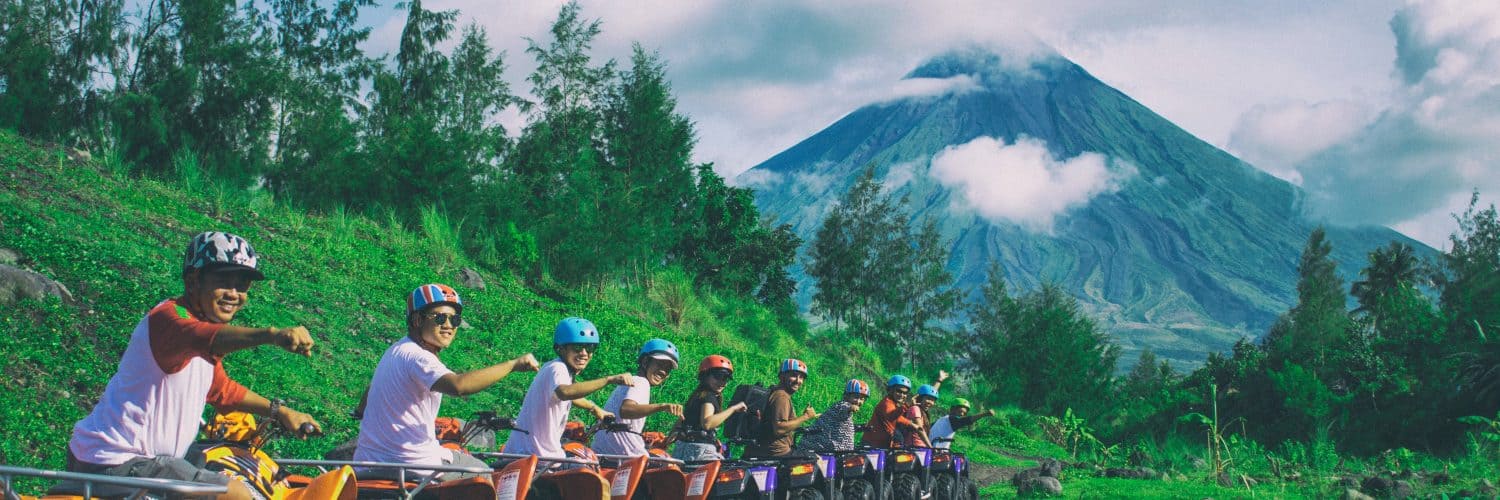
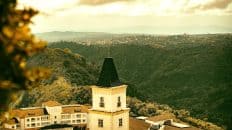
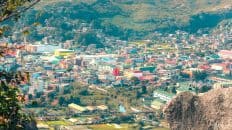














Add comment